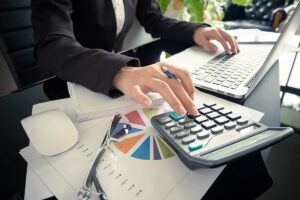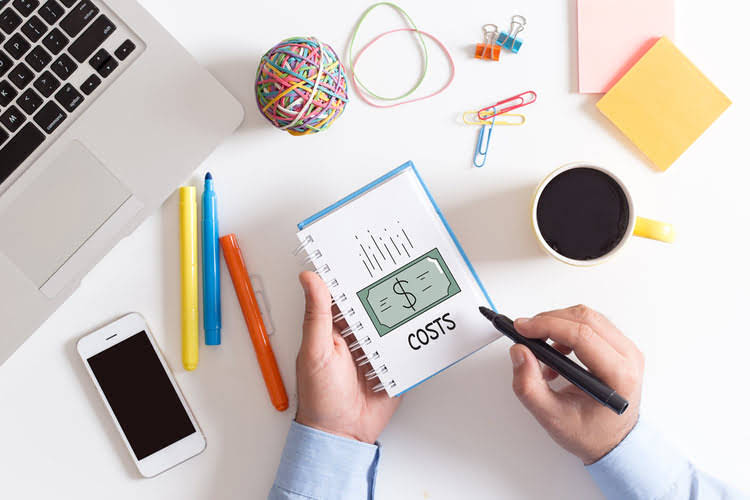
When you compute depreciation expense for all five years, the total equals the R27,000 depreciable base. Multiply the R27,000 depreciable base by the first-year ratio to get a R9,000 depreciation expense in the second year. The van’s book value at CARES Act the beginning of the third year is R9,000, or the van’s cost minus its accumulated depreciation (R16,000).
How Depreciation Affects Accounting Ratios?
Now, multiply the van’s book value (R15,000) by 40% to get a R6,000 depreciation expense in the second year. Let’s say you want to find the van’s depreciation expense in the first, second, and third year you own it. Multiply the van’s cost (R25,000) by 40% to get a R10,000 depreciation expense in depreciable assets the first year. It has a salvage value of R3,000, a depreciable base of R27,000, and a five-year useful life.
Why should depreciation be calculated?

The market value of the asset may increase or decrease during the useful life of the asset. However, the allocation of depreciation in each accounting period continues on the basis of the book value without regard to such temporary changes. The cost of the asset minus its residual value is called the depreciable cost of the asset. However, if the asset is expected not to have residual value, the full cost of the asset is depreciated. The expenditure incurred on the purchase of a fixed asset is known as a capital expense. Capital expenditure is a fixed asset that is charged off as depreciation over a period of years.

Depreciation in Accounting Explained
In most depreciation methods, an asset’s estimated useful life is expressed in years. However, in the units-of-activity method (and in the similar units-of-production method), an asset’s estimated useful life is expressed in units of output. In the units-of-activity method, the accounting period’s depreciation expense is not a function of the passage of time. Instead, each accounting period’s depreciation expense is based on the asset’s usage during the accounting period.
- This ensures that the company’s financial statements accurately reflect the true cost of the asset and the revenue it generates.
- When an asset is finally retired, a journal entry is made to remove the asset from the accounting system.
- The contra asset account Accumulated Depreciation is related to a constructed asset(s), and the contra asset account Accumulated Depletion is related to natural resources.
- However, before computing the gain or loss, it is necessary to record the asset’s depreciation right up to the moment of the sale.
- An asset is anything of value (either physical or intangible) that a company uses to run its business.
- Also, depreciation expense is merely a book entry and represents a “non-cash” expense.
Straight-line depreciation method
However, the amount of depreciation expense in any year depends on the number of images. A company estimates an asset’s useful life and salvage value (scrap value) at the end of its life. Depreciation determined by this method must be expensed in each year of the asset’s estimated lifespan. If you don’t depreciate your asset, you won’t be able to claim the full benefit of the depreciation tax deduction.
Advance Your Accounting and Bookkeeping Career
At the end of 10 years, the contra asset account Accumulated Depreciation will have a credit balance of $110,000. When this is combined with the debit balance of $115,000 in the asset account Fixtures, the book value of the fixtures will be $5,000 (which is equal to the estimated salvage value). A significant change in the estimated salvage value or estimated useful life will be reported in the current and remaining accounting years of the asset’s useful life. The combination of an asset account’s debit balance and its related contra asset account’s credit balance is the asset’s book value or carrying value.

However, they must be carefully monitored to ensure they are properly accounted for and do not distort the company’s financial position. Deferred tax assets arise when a company has overpaid its taxes in the past and can claim a refund or offset future tax liabilities. These assets can be created due to differences between accounting and tax rules, such as depreciation or inventory valuation.
Businesses use depreciation to account for the wear and tear, age, or obsolescence of physical assets such as machinery, equipment, buildings, and vehicles. Depreciation ceases when either the salvage value or the end of the asset’s useful life is reached. The straight-line depreciation is calculated by dividing the difference between assets pagal sale cost and its expected salvage value by the number of years for its expected useful life. The statement of cash flows (or cash flow statement) is one of the main financial statements (along with the income statement and balance sheet). For example, Accumulated Depreciation is a contra asset account, because its credit balance is contra to the debit balance for an asset account. This is an owner’s equity account and as such you would expect a credit balance.

There are multiple classes of assets, including Car Dealership Accounting commodities and property. Deferred assets are reported on the balance sheet as assets with a value that will be realized in the future. They are initially recorded as a debit to the asset account and a credit to a liability account. If the warranty period is longer than one year, the revenue from the sale of the product may be deferred until the warranty period is over.
